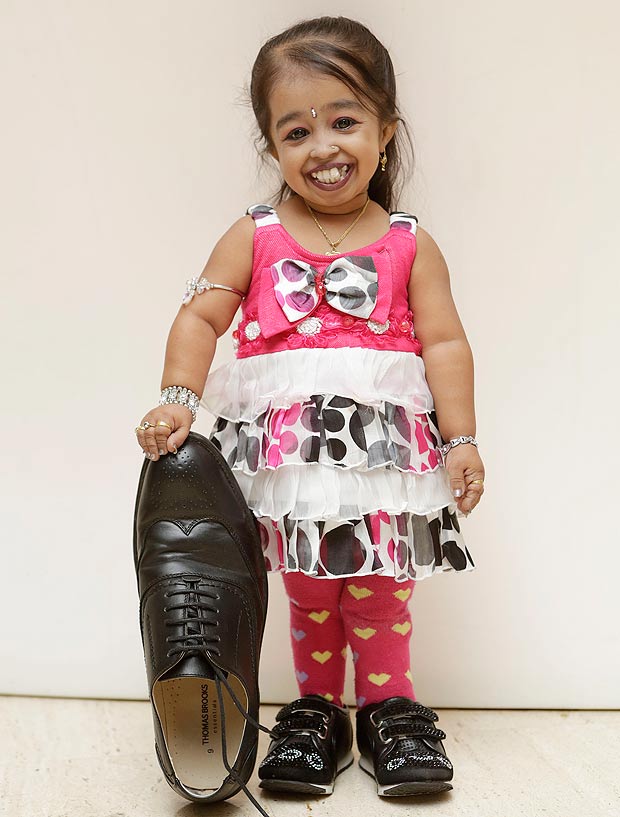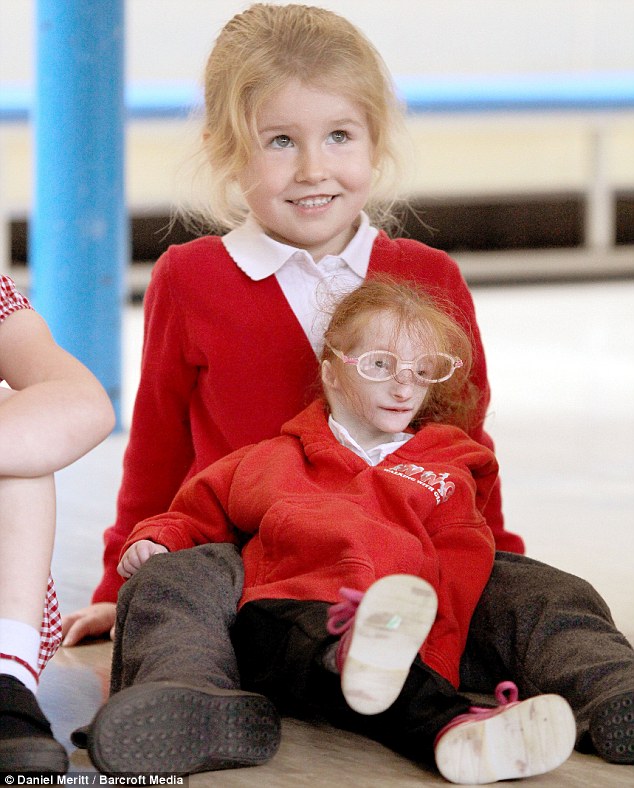Who is considered the world's smallest girl, and what makes her unique?
Jyoti Amge, born in Nagpur, India, in 1993, holds the Guinness World Record as the world's smallest living woman. Her diminutive stature, measuring 2 feet 0.6 inches (62.8 cm), is attributed to a rare genetic condition called achondroplasia, which affects bone growth.
Despite her physical challenges, Amge has achieved remarkable success. She has appeared in films, television shows, and music videos, showcasing her talents as an actress and motivational speaker. Her determination and positive outlook have inspired countless individuals worldwide, proving that physical limitations do not define one's potential.
Amge's story highlights the importance of embracing diversity and recognizing the value of every individual, regardless of their physical attributes. Her journey serves as a reminder that true greatness lies not in physical size but in the strength of one's spirit and the ability to overcome adversity.
World's Smallest Girl
The term "world's smallest girl" encompasses various aspects that shed light on the unique characteristics and experiences of individuals with dwarfism. Here are five key aspects to explore:
- Medical Condition: Achondroplasia, a genetic disorder affecting bone growth.
- Physical Attributes: Short stature, typically below 4 feet tall.
- Social Challenges: Discrimination, prejudice, and accessibility issues.
- Personal Triumphs: Overcoming obstacles and achieving success in various fields.
- Inspiration to Others: Raising awareness, promoting acceptance, and challenging societal norms.
These aspects are interconnected and contribute to the overall narrative of the world's smallest girl. Medical conditions and physical attributes shape the experiences and challenges faced by individuals with dwarfism. Social challenges highlight the need for societal change and the importance of inclusivity. Personal triumphs showcase the resilience and determination of these individuals, while their ability to inspire others underscores their impact on the world. Together, these aspects provide a comprehensive understanding of the topic, highlighting the medical, social, and human dimensions of being the world's smallest girl.
| Name | Birth Date | Birth Place | Height |
|---|---|---|---|
| Jyoti Amge | December 16, 1993 | Nagpur, India | 2 feet 0.6 inches (62.8 cm) |
Medical Condition
Achondroplasia, a genetic disorder affecting bone growth, is the underlying medical condition that contributes to the exceptionally short stature characteristic of the world's smallest girl. This condition results from a mutation in the FGFR3 gene, leading to impaired cartilage formation and growth.
- Skeletal Development: Achondroplasia primarily affects the growth of long bones, particularly in the arms and legs, resulting in a disproportionately short stature while preserving a relatively normal-sized trunk.
- Cartilage Formation: Cartilage is a crucial component of bone growth and development. In achondroplasia, the mutation disrupts the normal formation and ossification of cartilage, leading to shorter and deformed bones.
- Limb Length: The most noticeable manifestation of achondroplasia is the shortening of the limbs, particularly the arms and legs. This results in a distinctive physical appearance, with a large head and short limbs.
- Other Health Considerations: Individuals with achondroplasia may also experience other health complications, such as spinal stenosis, sleep apnea, and joint pain. These can vary in severity and require ongoing medical management.
Understanding the medical condition of achondroplasia provides a deeper insight into the physical characteristics and challenges faced by the world's smallest girl. It underscores the genetic basis of her short stature and highlights the importance of ongoing medical care and support for individuals with this condition.
Physical Attributes
Individuals with achondroplasia, the genetic condition that contributes to the exceptionally short stature characteristic of the world's smallest girl, typically exhibit a height below 4 feet tall. This distinctive physical attribute has several implications and considerations:
- Skeletal Development: Achondroplasia primarily affects the growth of long bones, particularly in the arms and legs, resulting in a disproportionately short stature. This skeletal development pattern leads to a unique physical appearance, with a large head and short limbs.
- Functional Limitations: Short stature can impact mobility, dexterity, and daily activities. Individuals with achondroplasia may require assistive devices, such as wheelchairs or modified furniture, to navigate their environment effectively.
- Social Interactions: Societal perceptions and biases can influence how individuals with short stature are treated and perceived. They may face discrimination, prejudice, or limited opportunities in various aspects of life.
- Medical Implications: Short stature in achondroplasia may be associated with other health conditions, such as spinal stenosis, sleep apnea, and joint pain, requiring ongoing medical care and management.
Understanding the physical attributes associated with the world's smallest girl provides insights into the challenges and complexities faced by individuals with dwarfism. Their short staturetheir physical abilities but also has implications for their social interactions, daily lives, and overall well-being, highlighting the need for societal understanding, inclusivity, and support.
Social Challenges
Individuals with dwarfism, including the world's smallest girl, often face a range of social challenges that impact their daily lives. These challenges include discrimination, prejudice, and accessibility issues, which can create barriers to their full participation in society.
- Discrimination: Discrimination against individuals with dwarfism can in various forms, such as exclusion from social activities, limited employment opportunities, and unequal treatment in public spaces. These discriminatory practices can stem from societal biases and misconceptions about dwarfism.
- Prejudice: Prejudice against individuals with dwarfism can manifest as negative attitudes, beliefs, or stereotypes. These prejudices can lead to stigmatization, social isolation, and a diminished sense of self-worth among individuals with dwarfism.
- Accessibility Issues: Accessibility challenges pose significant obstacles for individuals with dwarfism. Public spaces, transportation systems, and buildings may not be designed with their needs in mind, creating barriers to their mobility and participation in everyday activities.
Addressing these social challenges is crucial for creating a more inclusive and equitable society for individuals with dwarfism. It requires a shift in societal attitudes, the implementation of anti-discrimination laws, and the promotion of accessible environments. By breaking down these barriers, we can empower individuals with dwarfism to reach their full potential and live fulfilling lives.
Personal Triumphs
The world's smallest girl has demonstrated remarkable resilience and determination in overcoming obstacles and achieving success in various fields. These personal triumphs serve as an inspiration to others, showcasing the power of perseverance and the limitless potential of individuals with dwarfism.
One of the most notable examples is Jyoti Amge, the world's smallest living woman. Despite her diminutive stature, Amge has pursued a successful career in entertainment, appearing in films, television shows, and music videos. Her positive attitude and determination have broken down barriers and challenged societal perceptions of individuals with dwarfism.
The personal triumphs of the world's smallest girl highlight the importance of self-belief, hard work, and the pursuit of dreams. By overcoming challenges and achieving success, individuals with dwarfism challenge societal stereotypes and demonstrate their ability to make significant contributions to society.
Furthermore, these triumphs foster a sense of empowerment among individuals with dwarfism, encouraging them to pursue their goals and aspirations. They also inspire others to embrace diversity and recognize the value of every individual, regardless of their physical attributes.
In conclusion, the personal triumphs of the world's smallest girl serve as a testament to the human spirit's ability to overcome adversity. These achievements not only inspire individuals with dwarfism but also challenge societal norms and promote a more inclusive and equitable world.
Inspiration to Others
Individuals with dwarfism, including the world's smallest girl, serve as powerful sources of inspiration for others. Their experiences and stories can raise awareness of dwarfism, promote acceptance, and challenge societal norms, ultimately leading to a more inclusive and equitable world.
- Raising Awareness: The world's smallest girl and other individuals with dwarfism bring attention to the condition and its impact on individuals' lives. By sharing their stories and experiences, they educate the public, dispel misconceptions, and foster a better understanding of dwarfism.
- Promoting Acceptance: Through their visibility and achievements, individuals with dwarfism promote acceptance and challenge societal stereotypes. They demonstrate that people with dwarfism are capable, valuable members of society, deserving of equal opportunities and respect.
- Challenging Societal Norms: The world's smallest girl and other individuals with dwarfism challenge societal norms surrounding height and physical appearance. They inspire others to question preconceived notions and embrace diversity, fostering a more inclusive and accepting society.
In conclusion, the world's smallest girl and other individuals with dwarfism play a vital role in inspiring others. They raise awareness, promote acceptance, and challenge societal norms, creating a more inclusive and equitable world where everyone is valued and respected regardless of their physical attributes.
FAQs on "World's Smallest Girl"
This section provides answers to frequently asked questions related to the topic of dwarfism and the experiences of individuals with dwarfism, particularly those referred to as the "world's smallest girl." The aim is to provide informative and factual responses that address common concerns or misconceptions.
Question 1: What causes dwarfism?
Answer: Dwarfism is a term used to describe a group of genetic conditions that result in a. The most common type of dwarfism, achondroplasia, is caused by a mutation in the FGFR3 gene, which affects bone growth and development.
Question 2: What are the different types of dwarfism?
Answer: There are over 200 types of dwarfism, each with its unique characteristics. Some common types include achondroplasia, hypochondroplasia, and diastrophic dysplasia.
Question 3: What are the challenges faced by individuals with dwarfism?
Answer: Individuals with dwarfism may face a range of challenges, including discrimination, prejudice, and accessibility issues. They may also experience health complications, such as spinal stenosis, sleep apnea, and joint pain.
Question 4: How can we promote inclusivity for individuals with dwarfism?
Answer: Promoting inclusivity for individuals with dwarfism involves challenging societal stereotypes, raising awareness, and ensuring accessibility in public spaces and services. It also means treating individuals with dwarfism with respect and dignity.
Question 5: What are the achievements of individuals with dwarfism?
Answer: Individuals with dwarfism have made significant contributions to society in various fields, including entertainment, sports, and advocacy. They have broken down barriers and challenged societal norms, inspiring others to embrace diversity and inclusion.
Question 6: How can we support individuals with dwarfism?
Answer: Supporting individuals with dwarfism involves creating an inclusive and accessible environment, providing access to necessary resources, and offering emotional support. It also means valuing their unique perspectives and experiences.
Summary of key takeaways or final thought:
Understanding dwarfism and the experiences of individuals with dwarfism is crucial for fostering a more inclusive and equitable society. By addressing common concerns, challenging misconceptions, and promoting inclusivity, we can empower individuals with dwarfism to reach their full potential and live fulfilling lives.
Transition to the next article section:
In the following section, we will explore the topic of medical advancements and their impact on the lives of individuals with dwarfism.
Conclusion
Our exploration of the topic "world's smallest girl" has illuminated the unique experiences, challenges, and triumphs faced by individuals with dwarfism. We have gained insights into the genetic condition of achondroplasia, its physical implications, and the social barriers that individuals with dwarfism may encounter.
Through the stories of inspiring individuals like Jyoti Amge, the world's smallest living woman, we have witnessed the power of perseverance and resilience in overcoming adversity. Their achievements remind us that physical differences do not define an individual's potential or value.
As we move forward, it is imperative to continue raising awareness, promoting acceptance, and challenging societal stereotypes surrounding dwarfism. By fostering inclusivity and accessibility, we can create a world where individuals with dwarfism are empowered to live fulfilling and meaningful lives.


